
Caps, Kerchers and Coifs
16th century women’s informal and workaday headgear
Most of the familiar portraits of sixteenth century women show wealthy individuals, dressed in their best, wearing elaborate headdresses in a variety of styles. Sometimes some hair shows at the front, as with the French hood below, while with other headdresses, like the English gable hood also shown, the hair is completely out of sight.
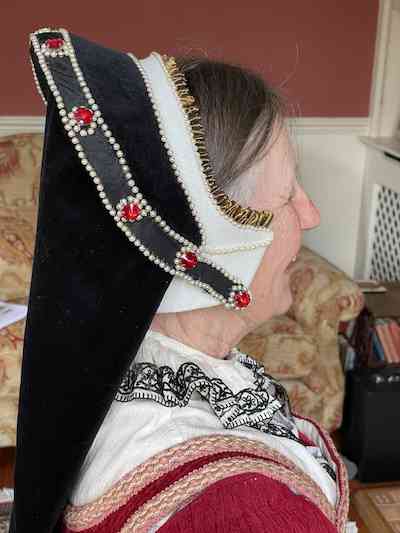
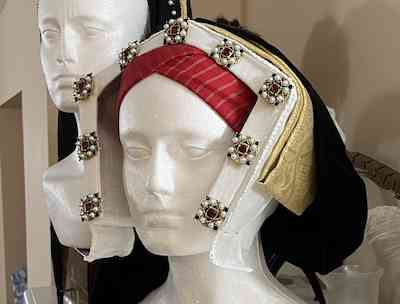
The expectation that women of all ranks would usually cover their hair stemmed from the words of St. Paul. He insisted that covered hair was a sign of modesty and piety, and also a symbol of men’s authority over women.
In Tudor times, a woman’s hair was considered her “crowning glory,” to be shown only to her husband, exceptions being made for very young girls, who wore hair loose as a symbol of maidenly innocence, or brides on their wedding day.
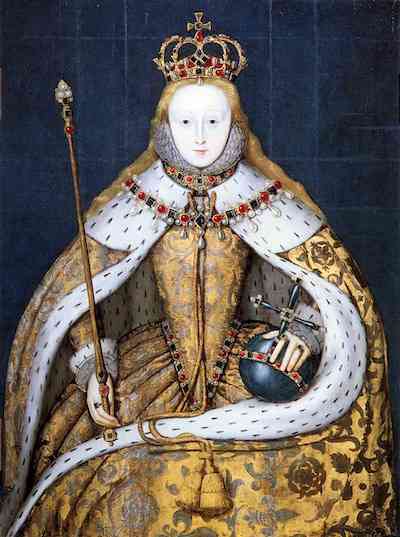
Coronation portrait of Elizabeth 1 in her Coronation robes National Portrait Gallery Queen Elizabeth I by Unknown English artist — sourced via Wikimedia commons
In this coronation portrait Queen Elizabeth I wears her hair loose, echoing the marriage ceremony in a highly symbolic act that would have been well understood by the people. Anne Boleyn also chose to wear her hair loose when she was crowned in 1533. It was said her hair was long enough for her to sit on it.
Covering the hair was also a practical necessity. Most women grew their hair very long — Anne Boleyn was no means unusual to have hair that reached her waist. Regular hair washing was impractical. Hot water was thought to open the pores of the scalp and therefore to be avoided for health reasons. Hair was, however, combed regularly, at least once a day.
Combs like these from the Mary Rose — 83 were found amongst sailors’ possessions when the ship was raised —
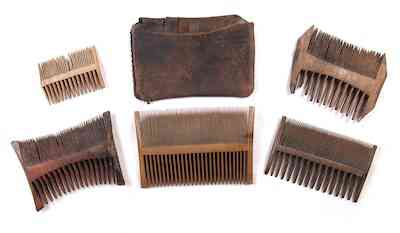
(Photo sourced via Wikimedia Commons)
were both cheap and widely available. It’s easy to dwell on the need to rid hair of lice as proof that everyone was ‘lousy’. (In her excellent book How to Be a Tudor, Ruth Goodwin has an interesting passage which suggests that the prevalence of combs among personal items means that people were regularly using them, and likely had the problem under control.)
Most of the time, it was easier to keep hair clean by simply covering it, which, for working women also kept it out of the way.
Linen was the favoured material for basic head coverings and these ranged from simple kerchiefs — a piece of cloth wrapped round the head, arranged in different ways and either tied or pinned in place — to more elaborately constructed caps, or cap kerchers. Along with cuffs, neckerchiefs, bands and ruffs, caps were classed as ‘wearing linen’ and were kept spotlessly clean as a display of respectability.
As is helpfully explained in The Typical Tudor (Form the Tudor tailor), most examples of linen caps held by museums are described as ‘coifs’. That term was first used for a specific form of men’s knitted cap, and wasn’t used for women’s head coverings until 1582.
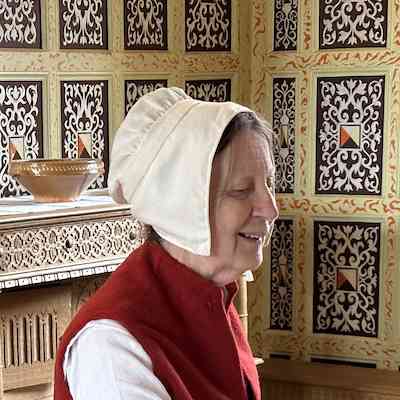
I’ve made two variations for Bessie the serving maid — one in Henrican style which has a wire to keep the shape at the front, shown above.
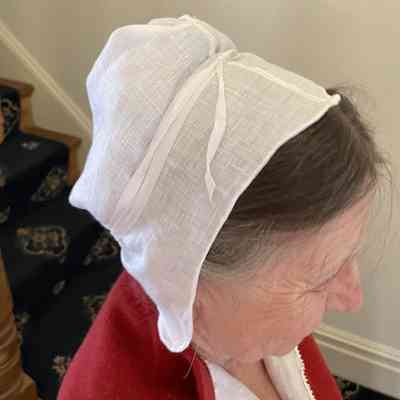
and this simple cap-kercher, which is gathered at the nape of the neck with tapes which are then tied around the head. This is an incredibly useful way of keeping hair tidy.
The thing that really makes these so successful is the braided and laced hair beneath. A long linen tape is plaited into two braids on either side of the head. The braids are wrapped around and then sewn in place using the long ends of the lone tape and a bodkin.
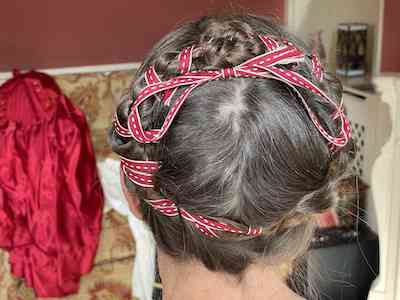
The braided hair forms a firm base for whatever style of head covering is being used. Even the more complex headdresses of the wealthy sit secrurely on braided hair.
While they are comfortable to wear, elaborate headdresses used expensive fabrics, and were often decorated with jewels. To keep grease and dirt from the hair from spoiling the costly fabrics, a linen under-cap of was worn. This can be seen in some portraits which show ties under the chin.
I have found the most successful style to wear under a French hood is this one, which replicates the shaping of the hood, neatly covers the braided hair, but dows not show at the front.
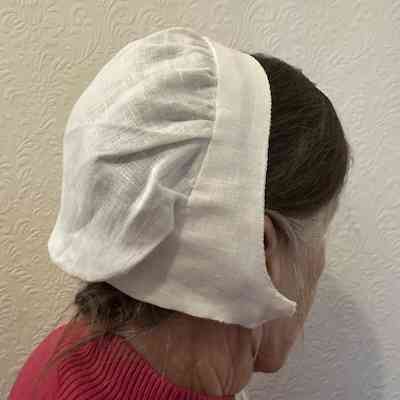
Infoirmal headgear for the wealthy?
It seems unlikely that aristocratic women wore their formal headdresses all the time. Rather, they wore them for show, while probably opting for simpler, more practical, head coverings when going about their daily tasks in the household or sitting at their sewing.
A huge number of elaborately embroidered ‘coifs’ are held in museums and galleries around the world. To create such beautiful items would have taken hours of work. These embroidered coifs must therefore have been worn by high status women, perhaps as a means to show their rank and status, and as a prettier alternative to a plain linen cap, in more relaxed, informal moments.
This is my own blackwork embordiered coif, created summer 2024.
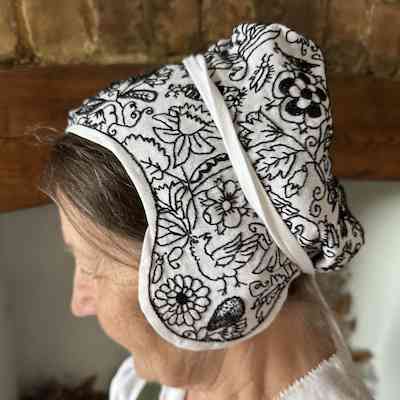
This design is based on an item in the V & A collection (T.844-1974) which dates to around 1600-1630 and was once worked in blackwork. The design, originally created using a ‘prick and pounce’ method, is still visible, along with needle marks where it was once stitched.
The shape is very similar to that I used for Bessie’s simple coif, with a slightly deeper hem allowance along the bottom edge to allow for the drawstring tape.
More information and short videos of my progress to create my own version of the ‘unstitched coif’ can be found on my Instagram page
https://www.instagram.com/griggs6176/
To find out more about the’ unstitched coif’ project visit
http://blackworkembroidery.org/unstitched-coif-project-about/
Rosemary Griggs
October 2024
Sources include:
The Typical Tudor, from The Tudor Tailor https://www.tudortailor.com
How to be a Tudor, Ruth Goodman
If you've enjoyed this post please share on social media using the buttons below
